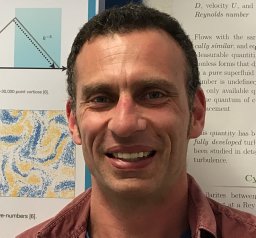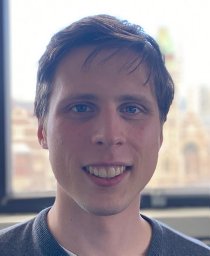Ideal superfulids offer insight into emergent many-body dynamics. But what of real superfluids encountered in the laboratory? Experiments are typically hot and noisy, even for ultracold quantum gases that operate at some of the coldest temperatures ever created. The regime of finite-temperature superfluids poses interesting challenges for theoretical description.
Quantum coherences, dissipation, and thermal noise all play a role in dynamics of phase transitions, and the dissipation of elementary excitations such as vortices and solitons.
Hot Matter Waves
Near the BEC phase transition the system contains many highly occupied modes driven by thermal noise. Open systems theory allows tracing over thermalized high-energy states that form a reservoir of particles and energy in contact with low-energy states that make up the condensate and other partially coherent modes.
C-Field theory adapts Wigner phase space methods of quantum optics to the description of ultracold atom systems. It allows the formalation of a generalized stochastic Gross-Pitaevskii equation to describe the phase transition and the lifetime and decay of BEC excitations.
Dissipative Dynamics
Decay can be driven by any mechanism that seeks to remove energy or angular momentum from the low-energy region of the c-field. Vortices and solitons are excellent test systems for c-field theory. Recent work has focused on the role of energy damping. We are exploring a number of quasi-eqiulibrium scenarios where energy damping is the dominant dissipative effect. For quantum vortex decay energy damping is in close agreement with existing experimental data.
Associated publications
-
Thermal decay of planar Jones-Roberts solitons
Nils A. Krause, A. S. Bradley
Physical Review A 110, 5 (2024)
Open access:
-
Mutual friction and diffusion of two-dimensional quantum vortices
Zain Mehdi, J. J. Hope, Stuart S. Szigeti, A. S. Bradley
Physical Review Research 5, 1 (2023)
Open access:
-
Dynamics of hot Bose-Einstein condensates: stochastic Ehrenfest relations for number and energy damping
R. G. McDonald, Peter Barnett, Fradom Atayee, A. S. Bradley
SciPost Physics 8, 2 (2020)
Open access:
-
Brownian motion of a matter-wave bright soliton moving through a thermal cloud of distinct atoms
R. G. McDonald, A. S. Bradley
Physical review. A/Physical review, A 93, 6 (2016)
Open access:
-
Low-dimensional stochastic projected Gross-Pitaevskii equation
A. S. Bradley, S. J. Rooney, R. G. McDonald
Physical Review A 92, 3 (2015)
Open access:
-
Stochastic projected Gross-Pitaevskii equation for spinor and multicomponent condensates
A. S. Bradley, P. B. Blakie
Physical Review A 90, 2 (2014)
Open access:
-
Stochastic projected Gross-Pitaevskii equation
S. J. Rooney, P. B. Blakie, A. S. Bradley
Physical Review A 86, 5 (2012)
Open access:
-
Spontaneous vortices in the formation of Bose–Einstein condensates
Chad Weiler, Tyler W. Neely, David R. Scherer, A. S. Bradley, Matthew J. Davis, Brian P. Anderson
Nature 455, 7215 948 (2008)
Open access:
-
Dynamics and statistical mechanics of ultra-cold Bose gases using c-field techniques
P. B. Blakie, A. S. Bradley, Matthew J. Davis, R. J. Ballagh, C. W. Gardiner
Advances In Physics 57, 5 363 (2008)
Open access:
-
Bose-Einstein condensation from a rotating thermal cloud: Vortex nucleation and lattice formation
A. S. Bradley, C. W. Gardiner, Matthew J. Davis
Physical Review A 77, 3 (2008)
Open access:



